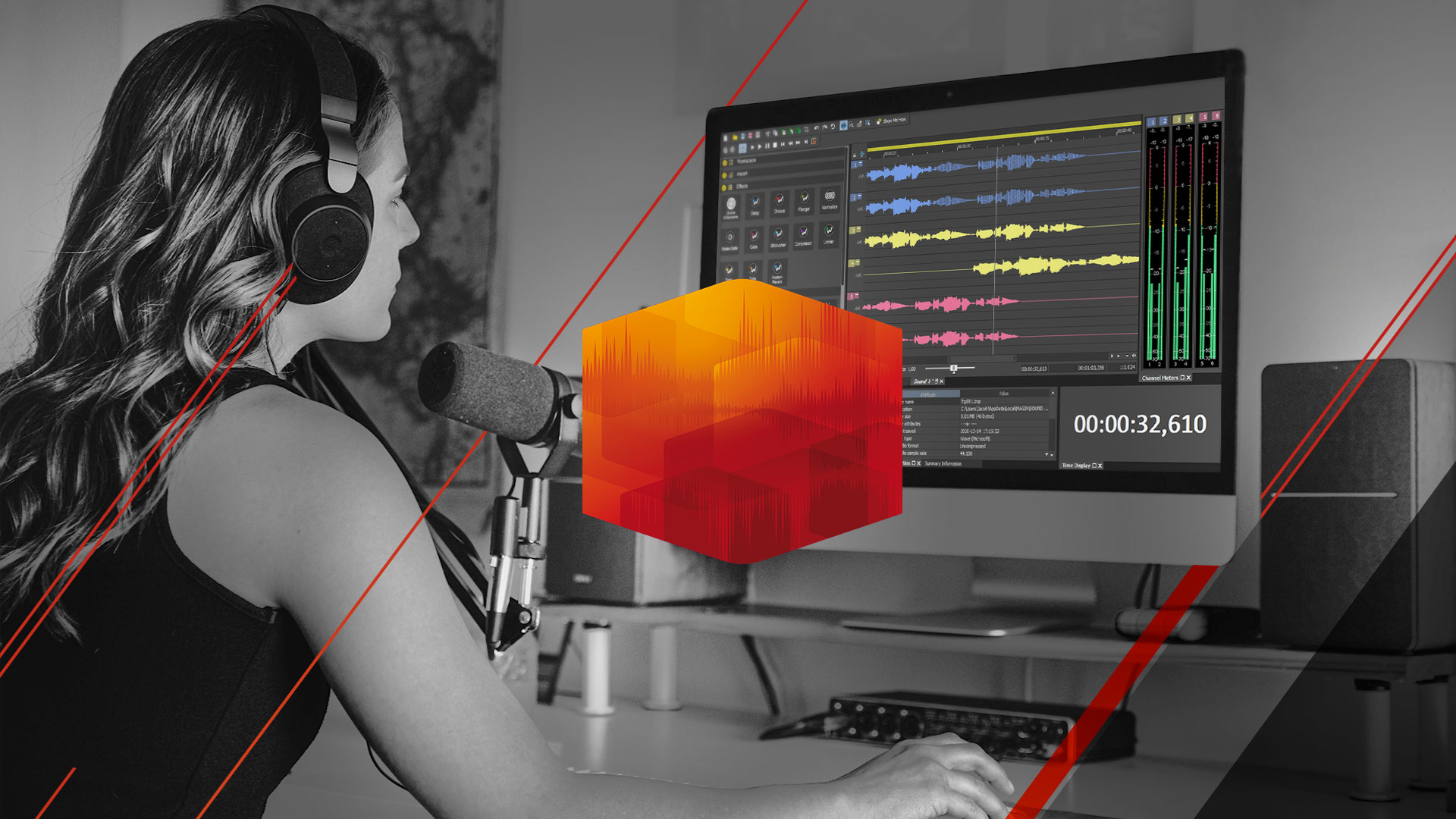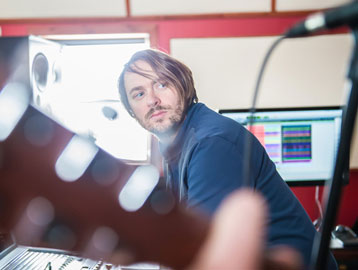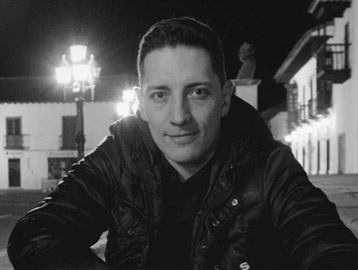NEW
Artist Interview: Heba Kadry

Egyptian-born Heba Kadry started her journey into the music industry with the completion of her studies at the “American University in Cairo” as a jingle composer for an advertising agency. Later, she moved to the U.S. to finish her studies in audio engineering. Shortly after, she took a job as a recording engineer and studio manager at the legendary “SugarHill Recording Studios”. Since 2013, she’s been working at her New York-based studio in Brooklyn. For her mastering process, she uses Sequoia and has mastered albums for such artists as Alex G, Neon Indian, The Mars Volta, TR/ST, Austra and Beach House. Most recently, she mastered the soundtrack of the movie “Jackie” with Natalie Portman composed by Mica Levi, which has been nominated for an Oscar in the category “Music (Original Score)”. Also, her mastering skills can be heard on the RAC remix of Bob Moses’ track “Tearing me Up”, which won a Grammy Award in the category “Best Remixed Recording.
Heba Kadry, who likes to describe herself as the “finisher”, offered us a deep look into the world of mastering and shared her thoughts on creativity, music production, and what the future holds for the industry.
On Sequoia – “I heard so much about Sequoia and it just seemed like the right fit for me.”
Heba, what made you choose Sequoia?
Because it’s an incredibly versatile DAW. I heard so much about it over the years and it just seemed like the right fit for me the moment I started testing it.
What are your favorite features?
The object editor, comparisonics waveform frequency display, native Sequoia restoration suite and the plethora of loudness, phase & peak meters. Also, I really like the fact that Sequoia doesn’t have a default library setup that constricts the way you organize your files. There are no drives to mount or weird annoying windows to find your audio files. You basically create a library and a system to your liking. The sample rate conversion in Sequoia is really fantastic as well.
This is not really a feature, but the Sequoia manual is wonderful and beautifully made. It’s a rare thing these days to get a well made manual with your gear.
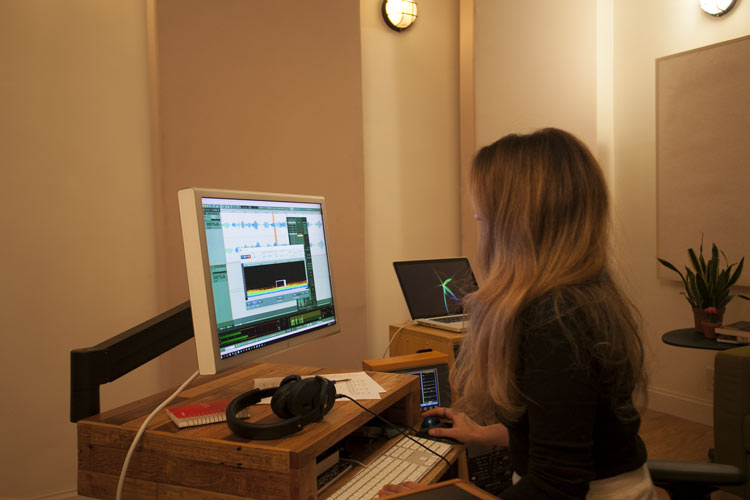
You mentioned the Object Editor. What makes it suited for the work that you do? What problems has it solved that you used to struggle with?
I am a bit of an automation freak and the object editor makes a job that would have normally taken me 15-30 mins to complete, reduce down to 5 minutes or less. So, for example, if I’m working on a track and I’m digging how all the verses are sounding, but something is amiss on the choruses, maybe the guitars need a little more bump around 500 Hz before it hits the analog chain. Or, if I want to mess with the imaging a bit on a particular section, this can all be accomplished in a very smart and non-laborious way. I start by creating a snapshot chain of various EQs and/or compressors; once I’m happy with the chain I can save it as a “snapshot” and very easily pull it up on the chorus sections or whatever section needs to be addressed with one click. It basically allows you to manipulate and shape regions within a track very quickly.
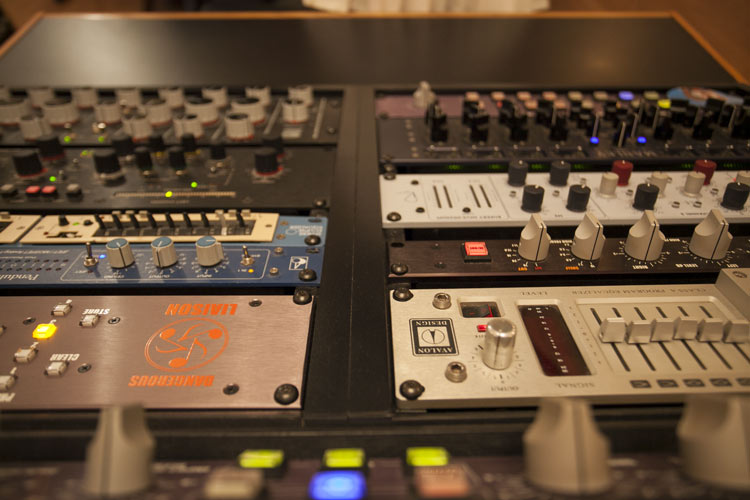
Another instance is sibilance. I’m a stickler with de-essers, I hate the way they sound strapped on the entire mix bus; it always sounds unnatural and messes with the liveliness of a mix. If the vocalist has some razor sharp S’s, I prefer to deal with each sibilant separately and precisely. So I’ll pull up my favorite de-esser like the DMG Essence and create a chain that handles one instance of sibilance and save it then move on to another one that might be more severe. I’ll create another snapshot that might be a little bit more heavy handed and perhaps introduce an EQ to help smooth things out. As I traverse through the track, I’ll get into a rhythm by identifying the pattern of sibilance and loading up the appropriate snapshot (the editor can save up to 4 snapshots). This is so wonderful because one de-esser with one setting doesn’t necessarily solve the problem. The intensity of the sibilance might vary depending on the vocal delivery and therefore your threshold and side chain frequency will need to change as well. The T’s or the CH’s might be more lower mid-rangey whereas the S’s reign around 6-8k for example.
The comparisonics frequency display makes it easy to fish out the sibilance because you can visually see and not second guess or have to scrub through to identify its exact placement.
The comparisonics frequency display makes it easy to fish out the sibilance because you can visually see and not second guess or have to scrub through to identify its exact placement.
How do you approach mastering with Sequoia? Do you have a standard process or do you work on each production differently?
Yes, I have a specific template I load up with settings and plug-ins arranged in a particular way for my perusal. The actual process of mastering and my signal chain of course varies, but my template and how I lay out each project is pretty much the same.
Heba Kadry – “I’m an unabashed synth lover.”
Listening to your work, anyone can hear that you specialize in electro-pop. What drew you to this genre?
I actually work on plenty of weird noise/experimental/thrash/metal as well – I think my discography runs the genre gamut. And I really like that. I prefer not to get pigeonholed in one specific genre. It’s exciting to be able to go into the studio one day and work on an experimental all drum record and then switch to a straight up top 40 glossy pop production the following day. It keeps me on my toes and engaged and I get to meet so many wonderful artists that introduce me to music I’ve never heard of before.
However, being an unabashed synth lover naturally draws the electro-pop crowd to me, I suppose! My first instrument was a Casiotone 610 synth and being a child of the ’80s, I was drawn to synth-based music. Artists like Gershon Kingsley or Vangelis were always on rotation in my household. It was also really popular to listen to synth modular interpretations of classical music at the time, records like Switched On Bach really appealed to me, because I am a classically trained pianist and I loved hearing these sort of renegade versions of standard classics.
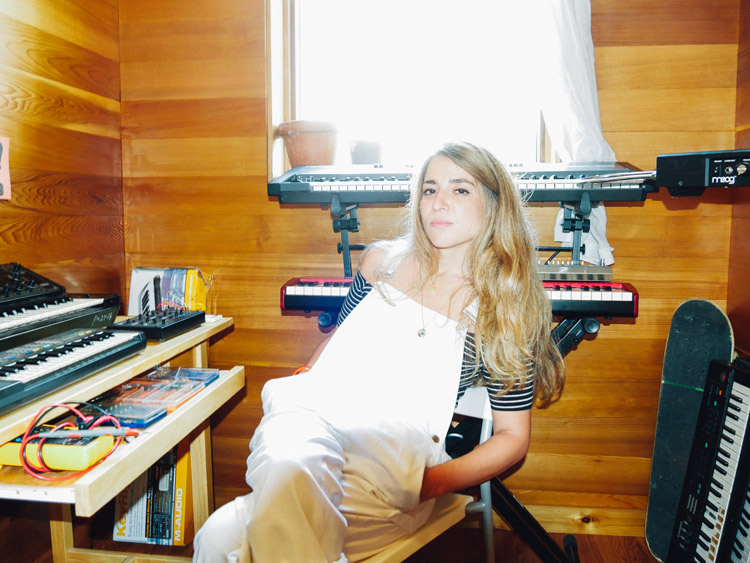
Picture by Xenia Rollinson
What is the most important aspect to you when mastering an album?
Doing my best to bring the artist or producer’s vision to life and making the mastering experience as fun and seamless as possible.
On Mastering – “A mastering engineer, in very basic terms, is a finisher.”
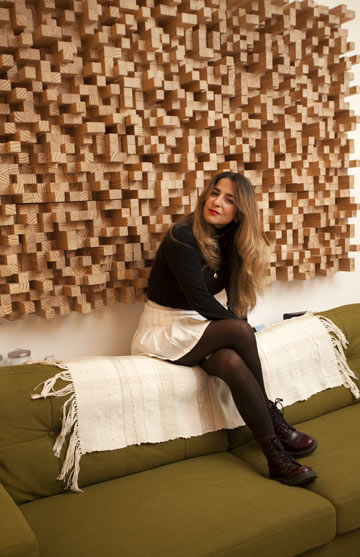
Most people only know about mixing. How would describe mastering to someone who doesn’t have a clear idea about what it means?
A mastering engineer, in very basic terms, is a finisher.
After the tracking and mixing process is complete, the final stage of processing comes into play to bring together all the mixes cohesively. Then it’s prepped for pressing, online release or any other media listening format. Everyone loves an analogy so, I guess it’s someone like a photo retoucher or a telecine colourist in the video world who approaches media in a similar fashion.
It’s a profession where tiny 1/4 dB moves can make a world of difference and attention to micro details is key. These days, one album could have been recorded/mixed at home or at a variety of recording studios and handled by several engineers. In some instances, there might have been 4 or 5 mixers and several producers on deck. Naturally, mixes from various engineers set at different levels and mixed with potentially different approaches can make the album listening experience a bit of a bumpy ride if they are left untreated. With mastering, a variety of tools are at your disposal to bond these tracks together and create a cohesion in loudness and frequency in an acoustically treated room with accurate monitors. Besides balancing the sonics, you are also the quality control police and any unwanted artifacts like clicks, pops and noises are removed. Once the album is mastered, the tracks are sequenced in order and decisions are made on the appropriate spacings and transitions between songs.
It’s important to note that the fine-tuning aspect of the mastering process is a chance for the artist to make some pretty final and sometimes extreme decisions about their album. Mastering may highlight certain elements in a mix that may need to be revisited or it might prompt the artist to change the sequence or even cut a few songs if they are not gelling well within the album. It’s kind of an album “detox” if you will.
The last step is prepping the final production masters. These are various master formats that are sent to cut lacquers from or to the pressing plant to press CDs, cassettes or to release the tracks online in the various sample rates.
How large is the difference between a track before and after mastering and how much freedom does the mastering engineer have to shape and change the tone of a track?
That’s completely project dependent. You might get source mixes that are pretty much 90% there and any processing work might be very light-handed. And sometimes, the changes on projects are completely radical. It really all depends. I think I realized I was becoming a better mastering engineer when I started getting really great sounding mixes from engineers and recognized when to step back. Sometimes less is so much more and other times you need to roll up your sleeves and dig right in. This is why it’s so important to create a space that encourages ongoing dialogue with the artist/mixer/producer throughout the whole mastering process.
Would you describe mastering as its own form of art/expression or is it a purely technical optimization?
It’s definitely both. My role is dictated by the project and the client’s needs. There are some projects where I am hired to be a technician and my involvement is pretty transparent. There are other situations where the artist or whoever is making the sonic decisions will ask for feedback on the mixes and my suggestions on how to improve things are far more involved. So, it depends on who is hiring me. In a way you’re a bit of a chameleon, you find your role and what is expected of you based on the project’s needs – another reason why dialogue and communication is the most important thing! You really can’t be a poor communicator or socially inept with people and expect to be a great mastering engineer.
Being the last step in the album production wheel, anxieties and insecurities in some artist may start to surface. Mastering is sort of a sobering process for artists because things are finally coming together. Besides the technical know how, you need to retain a really zen calming presence in situations like that, and solve/circumnavigate any kind of anxieties the artist may have about the record.
On a personal level, and this might sound super cheesy, I make a lot of my decisions based on feeling. If I’m mastering a record and a vocal on a track is giving me that hair-raising goosebump feeling, then I will figure out a way to bring that out more in an appropriate way that works with the music.
On working with Neon Indian – “As a mastering engineer you strive for a master that translates well on as many formats as possible.”
Were you ever also responsible for creative input aside from mastering?
On “Vega Intl Night School”, we did some layback to 1/2” tape which was a lot of fun. I suggested slowing down the speed on the tape machine to 15ips and using the capstan to scrub the tape in order to create a woozy garbled effect on the intro of “Hit Parade”, for example. We also took a lot of time to experiment with the track spacing and layering the sound collages/interstitials Alan Palomo (Neon Indian) made between the tracks. The album plays like one long-lost mix tape from the ’80s, so the crude fade work was deliberate. It was really fun, we threw out some “mastering rules” out the window on that album.
Comparatively, tracks like “Annie” and “Slumlord” sound especially impressive with headphones. Did you conceptualize the album master specifically for listening with headphones?
Thanks! As a mastering engineer, you strive for a master that translates well on as many formats as possible. It’s impossible to cover every monitor/headphone ever made but my goal is to make it sound as awesome as it can be in my room. Slumlord is particularly interesting because it’s a 7 minute house track that’s separated into two sections. The first half was mixed by Alex Epton and the second half was mixed by Ben Allen. The section mixed by Epton was dumped to 1/2” tape and mastered, and the Allen section was mastered from the digital source mix and edited together with the first section. Alan was hitting a wall figuring out a way to bond the two tracks together that made sens. He had mentioned a few ideas during the session that were scrapped. After a long 10 hour session, he came back the following morning with zero sleep but a bunch of bizarre sound collages that miraculously worked.
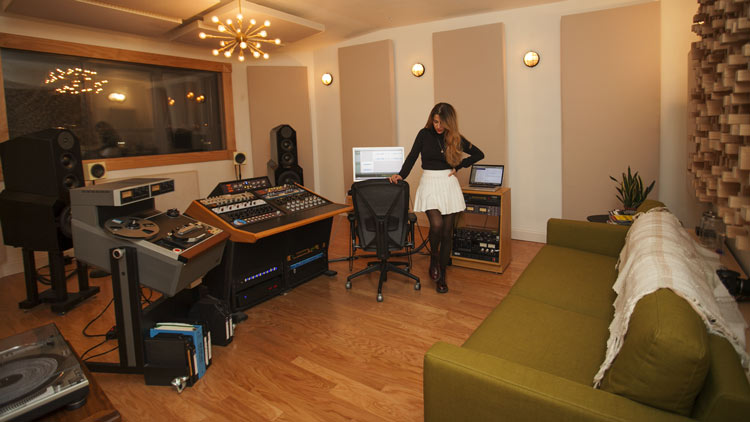
The music industry/ business – ” I am a firm believer in the power of great skills and experience.”
What is your opinion of the “loudness war”, which is going on in the music industry at the moment? If one looks at the wav-files of Muse productions, for example, one sees that there is almost no dynamic anymore. What is your philosophy in your mastering process regarding this topic?
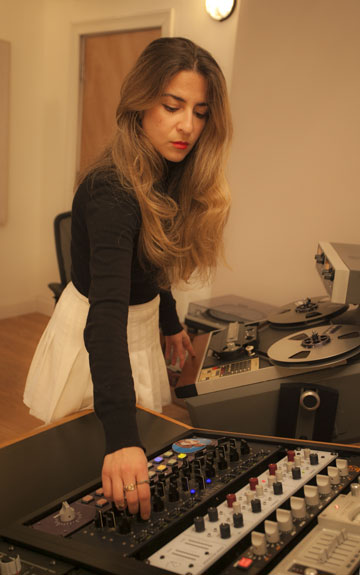
It’s not something I think about and I’m not one of those engineers that targets a specific LUFS number for each project. I don’t subscribe to that philosophy. Each project is different and cannot be packaged under the same threshold. My job is to deliver what the artist wants. It’s not my album and not my place to force any sonic decisions. If an artist chooses loudness, I will oblige and do my best to make it sound as great as possible. In some cases, I may audition a less crushed alternative and let the artist make a more informed decision about what’s best for their record. If they opt for the louder version, then I am totally down.
I know people get pretty heated about the topic of dynamics and I can understand why. Loud records are so fatiguing and can put a damper on the listening experience. At the same time, the policing of dynamics in records is a ridiculous concept and an impediment on the artist’s vision. Can you imagine if painters were only allowed to paint on a certain size canvas? OK, maybe not the greatest analogy, but you get what I mean.
It’s really not that easy to master a record for loudness; it’s so time-consuming to get it sounding decent. There are constant distortion issues to circumnavigate, brash high end to tame and an overall lack of clarity because everything in the mix is just as present as the next thing. Your brain is on overload because it’s being blasted with way too much information to process all at once. But there are plenty of examples of great sounding loud records done right.
On the uptick, I am noticing an overall return to dynamics in the last few years and I think that’s accelerated with the revival of vinyl. A heavily limited master doesn’t sound very good when it’s cut on a lathe and there are many cases where I’ll master two different versions if the digital master is too loud. This has helped tilt the mastering trend back in favor for dynamics and more natural transients, I think.
Through increased “accessibility to production equipment”, more people are able to get equipment for less money and collectively finish a song from start to master. Have you noticed an impact on the amount of work that professional mastering studios receive as a result?
I think the accessibility is fantastic and resulted in some really, really terrific albums…and also some terrible ones of course, but that’s besides the point. Giving artists tools to have infinite time to mess around with their recordings and find their sound is a wonderful thing. And, while yes, cheap recording options have sadly impacted large format recording studios, especially in New York, I still don’t believe any kind of software will ever put professional record production completely out of business – including mastering. I am not in denial that things have changed in the last 10-15 years but I am a firm believer in the power of great skills and experience.
An artist that may start with a modest home recording setup will eventually graduate and hire a pro to track or mix aspects of their album at some point in their career. Garageband is like a gateway DAW. It’s great for tinkering, but at some point you’ll hit a wall and will desire to get a pro’s experience and gear on a record. It’s just natural to want to make your next record sound better. If a record was entirely recorded and mixed at home, some artists will spend at least a little bit of money on mastering. Perhaps to bring back some analog warmth to their totally in the box mixes or at least get a professional to properly set up their album for official release. It’s natural with time and the advent of technology to constantly come up with cheaper and faster home recording options – I mean, home recording setups were advertised as far back as the ’70s. They may have been far, far, far more expensive than now but the need to record in the comfort of your home and cheaply has always been there and will not go away. We just need to adapt.
In the long run, I don’t believe a DAW, or even a mastering algorithm, will replace the human ear, years of studio experience, the culture of humans connecting through music in a studio and the just raw emotion and happiness derived from a great studio experience. In the last few years, I’ve embraced the ease of plug-ins. But that will certainly not eclipse the joy of getting my hands on hardware, turning knobs and how a real tube EQ just sounds far superior than an emulation plug-in of the same piece of gear. It’s all about balance and just being an honest and passionate person that will keep people coming back your way.
Additional Links:
- Official Website: http://hebakadry.com/
Pictures by Lola Serrano, when not otherwise noted.
Next Post >
Artist Interview: Bill Evans
< Previous Post
2 million new beat producers in only 15 months
Related Posts
Developer Interview: Robin Lobel
French based software developer Robin Lobel takes us behind the scenes of SpectraLayers Pro and shares his ideas, the concept and his visions.
The new SOUND FORGE Audio Studio 15
An overview of all the new features and optimizations!
Artist Interview: Siegfried Meier
The producer, engineer and founder of the legendary Beach Road Studio, Siegfried Meier, talked with us about his work.
Artist Interview: Jairo Bonilla
The Columbian producer Jairo Bonilla shares his valuable experiences and tips for using Music Maker to create advertising music with us.

